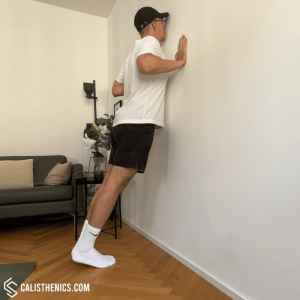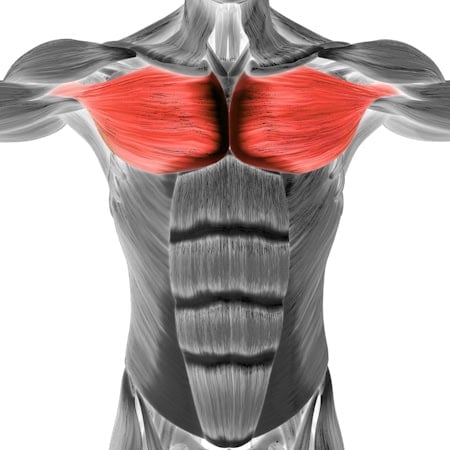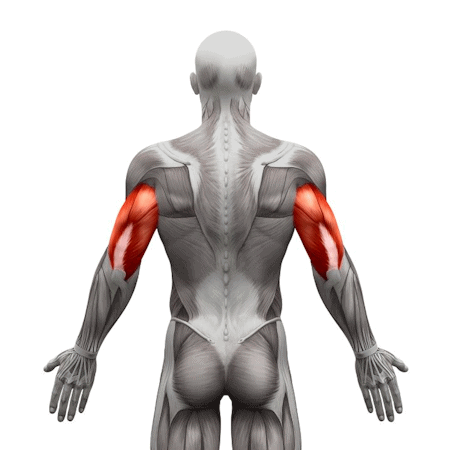Wall Push-ups
How to do Wall Push-ups?
Wall push-ups are a beginner-friendly push-up variation that uses the wall instead of the floor to perform the movement. This exercise is ideal for those new to push-ups, recovering from injury, or looking to build strength gradually. By performing push-ups against a vertical surface, you reduce the load on your upper body and can work on form, shoulder stability, and muscle endurance while still engaging key muscles in the chest, shoulders, and arms.
Steps to Perform a Proper Wall Push-up
1. Starting Position:
• Stand facing a wall with your feet about shoulder-width apart and arms extended out in front of you. Place your hands on the wall at shoulder height, slightly wider than shoulder-width apart.
• Step back a few feet from the wall to create an angle between your body and the wall. The further you step back, the more challenging the push-up becomes.
2. Engage Your Core:
• Tighten your core muscles and engage your glutes to maintain a straight line from your head to your heels. Your body should form a slight incline toward the wall.
3. Lower Your Body Toward the Wall:
• Inhale as you bend your elbows, lowering your chest toward the wall. Keep your elbows slightly tucked at a 45-degree angle from your torso to protect your shoulders.
• Lower yourself until your chest nearly touches the wall, keeping your core tight and body aligned.
4. Push Back to Starting Position:
• Exhale as you press through your hands, straightening your arms and pushing your body back to the starting position while maintaining control.
• Keep your core engaged throughout the movement to prevent arching or rounding of the lower back.
Benefits of Wall Push-ups
• Beginner-Friendly: Wall push-ups are a great way to introduce push-up form and mechanics without the intensity of floor push-ups. They are ideal for beginners, those recovering from injury, or those with limited upper body strength.
• Builds Upper Body Strength: Wall push-ups engage the chest, shoulders, and triceps, helping to build strength in the upper body while reducing the load.
• Improves Core Stability: Keeping the core tight during wall push-ups helps improve overall core stability and strength, which is crucial for maintaining proper form in more advanced exercises.
• Promotes Shoulder Mobility: The controlled motion in wall push-ups helps improve shoulder mobility and flexibility, especially in those who have limited range of motion.
• Low-Impact: Wall push-ups are easy on the wrists and shoulders, making them a safe, low-impact exercise for most people, including those with joint issues.
• No Equipment Needed: Wall push-ups can be done anywhere there is a sturdy wall, making them a convenient and accessible exercise.
• Great for Warm-ups: This variation can also be used as a warm-up to prepare the shoulders and chest for more intense upper body exercises.
Tips for the proper execution of Wall Push-ups
Core Engagement: Keep your core tight throughout the movement to maintain proper alignment and avoid straining your lower back.
Hand Placement: Your hands should be slightly wider than shoulder-width apart to allow for better chest engagement. If you feel shoulder discomfort, adjust the position of your hands slightly.
Elbow Positioning: Keep your elbows close to your body or at a slight angle to prevent shoulder strain and engage the triceps more effectively.
Body Angle: The further you stand from the wall, the more challenging the exercise becomes. Adjust your distance from the wall based on your fitness level.
Controlled Movement: Lower yourself slowly and push back up with control. Avoid rushing through the movement, as this reduces the effectiveness of the exercise.
Muscles worked when doing Wall Push-ups
Primary Muscles:
•Chest: Pectoralis major and minor (for pushing the body away from the wall)
•Shoulders: Anterior deltoids
•Triceps: Triceps brachii (back of the arms)
Secondary Muscles:
•Core: Abdominals and obliques (for stabilization)
•Glutes: Engaged to maintain body alignment
•Lower Back: Erector spinae (supports proper posture)
•Forearms: Help stabilize the wrists and control the movement
Primary Muscle(s):
Secondary Muscle(s):
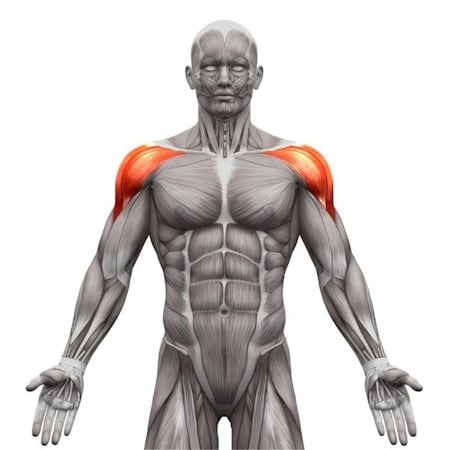
Anterior delt
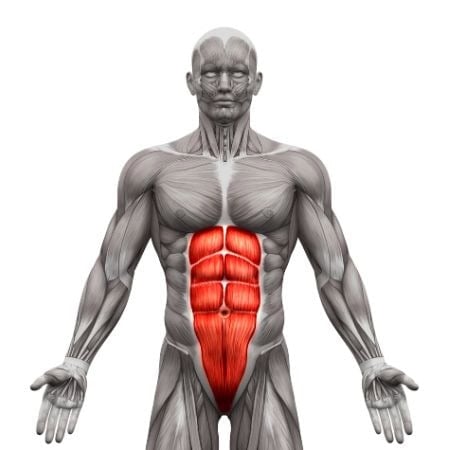
Abdominal
Equipment needed for Wall Push-ups
No equipment needed for this exercise.
Adjust the difficulty of Wall Push-ups
How to make Wall Push-ups harder?
How to make Wall Push-ups easier?
How to make Wall Push-ups harder?
To make Wall Push-ups harder:
-
Step Further Back: Increase the distance between your feet and the wall to create a greater angle, which adds more resistance and makes the exercise more challenging.
-
Add a Clap: For an advanced variation, try adding a clap between reps by pushing off the wall explosively and clapping before returning your hands to the wall.
-
Increase Repetitions or Sets: Perform more reps or sets to increase the endurance challenge and further engage your muscles.
-
Single-Arm Wall Push-ups: Try performing wall push-ups with one arm at a time to increase the difficulty and focus on unilateral strength.
How to make Wall Push-ups easier?
To make Wall Push-ups easier:
-
Stand Closer to the Wall: If you’re just starting out, reduce the distance between your feet and the wall. This will reduce the angle and make the exercise easier.
-
Use a Wider Hand Placement: A wider stance can reduce the load on your shoulders and make the push-up more comfortable.
-
Reduce Reps: Start with a smaller number of repetitions, such as 5-8 reps, and gradually increase as you build strength and endurance.

